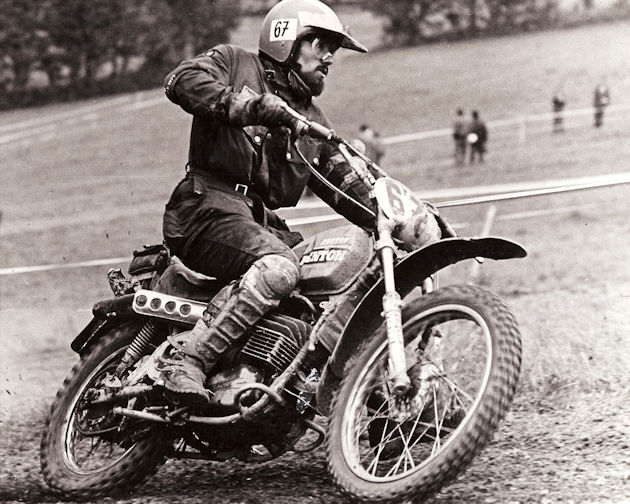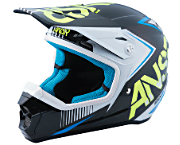© 2019 by Bill Uhl, ATV Expert Witness

As a Court-Qualified Expert Witness and Safety Trainer, I’ve worked on over 76 legal cases and provided testimony regarding the operation of all-terrain vehicles — ATVs, UTVs, snowmobiles, as well as motorcycle dirt bikes, dual sport cycles and street bikes, off-road guided tour injuries and related trail construction. I’m often asked by both plaintiff and defense attorneys to explain why and how going slow to go fast when operating off-highway vehicles (OHVs) makes it possible for riders and their equipment to go the distance without any problems or injuries during off-road riding.
The video that is linked to a previous article I posted at the bottom of this web page illustrates this point, as does the fourth video of the 1973 International 6-Days Trials event held in Dalton, Massachusetts. I was the top performing American rider at that event. Notice how riders from many countries consistently and intentionally ride at a controlled pace, not too fast and not too hard. This means the riders are honoring the limits of their personal riding abilities. They are most interested in keeping their vehicle and themselves in good shape so they can ride the 1,000 plus miles that makes up this extreme event. Doing so allows them to qualify for the final special test of the event, the grass track.
What does this video tell recreationists and employees who use OHVs on the job about how to safely ride / drive their vehicles while minimizing the wear and tear on their machines?
It’s actually quite simple. As I described in the article referenced in paragraph two above, it’s critical that you look at and touch relevant parts of your vehicle every chance you get so you can ensure it stays in good working order and helps you stay safe.
Next, practice the different skills necessary to be able to ride / drive on varying types of terrain and under different riding conditions. This will help you gradually improve your riding abilities. If you make focused practice an ongoing process when you use any type of off-road vehicle, you’ll always be learning something new, while polishing your existing skills. You’ll over time, become a much smother and more efficient vehicle operator.
How does an operator drive / ride lightly on their wheels? Some operators crash into multiple obstacles on the ground such as rocks, sticks, etc. as they travel the ups and downs of the trail with the full force of their speed and weight. Others carefully select very precise lines through the terrain in front of them. By doing this, they limit their impact on the terrain, themselves and their vehicles.
This comparison is similar to driving a bulldozer versus operating a pick and shovel by hand. With one method, the operator crashes into obstacles with its full force and weight. Using the other technique, he gently picks at cracks in the rocks and skillfully pries things apart. The bottom line for operators is: Don’t use unnecessary force. Allow the process to flow smoothly and easily.
When you go slow, you have time to make the correct decisions about how to navigate the upcoming terrain. This greatly minimizes mistakes, so you can move through an area as quickly and as smoothly as possible. Because of this, by the end of the day and even 1,000 sections later, you arrive ahead of the time it would have taken for you to have fallen over just once in any of the areas or having to stop and fix your equipment after going through a section. All of this means that by going slower and operating within the boundaries of your personal ability, you arrive at your destination faster and safer than if you had forced yourself to ride / drive outside your current abilities.
Stop right now and reflect on this thought: If you were to sprain your ankle, injure your hand or break a leg during what was supposed to be a gentle ride / drive into the forest or desert, you might create a life-threatening event. What if, for some reason your machine’s electrical system stopped working at that very moment? What if something else compounded the problem, such as not having cell service available or you hadn’t told anyone where you were going or when you would be back and you left your survival pack at home because your plan was to only go out for a short trip?
We sometimes forget how far we can travel in a short amount of time. Let’s say you took a one-hour ride / drive, so you’re now 20 to 30 miles from you starting location. This means if you sprain your ankle, walking back may be out of the question. If your leg is broken, you’re probably not going anywhere. If you’re fairly close to a water source and you know the area well enough to find it, in time, you could crawl there, dragging whatever survival equipment you packed or could scrounge off your vehicle.
You could probably survive at least for a while if you’ve been trained regarding survival skills, and I do suggest that you gain proper training from a qualified instructor because your life and long-term health can be at risk. However, if the area you choose to travel is not a well-traveled route, rescue during an emergency may not arrive for some time. If you have to leave your vehicle, be sure to post directions to your new location so people who pass by or look for clues at the incident site where you left your OHV or in your truck / car before you start out on your adventure so they can locate you with as little effort as possible.
Of course, using an OHV for work or recreation is different than racing and operating an OHV during the International 6-Day Trials Enduro, as you’ve seen in the videos this article refers links to. Even so, many of the same skills are necessary to be able to operate a vehicle over rough terrain, mile after mile, year after year without mechanical or physical problems, as in the International Olympic type event. Practice your OHV skills now so you can avoid accidents and injuries in the future.
I cannot over-emphasize how important it is for you to learn survival skills and to take every possible step to prevent accidents and injuries when you ride / drive your ATV, UTV, snowmobile or motorcycle. Remember the motto I teach every class I instruct, whether military Special Forces personnel, corporate employees operating off-road vehicles on the job or recreationists: “Go Slow To Go Fast”.
Whether I’m writing a report for an attorney, conducting a site visit, testifying in Court or training personnel for Military Special Forces, corporate or government organizations, one thing is similar. My job always includes analyzing safety conditions. I often accomplish this task by: (1) analyzing the smallest components that either increase or decrease safety and then (2) putting the components back together so the entire safety picture is available to all concerned, including attorneys, the judge and jury members.
The OHV operator safety focus I’m describing is a powerful fuel for training operators and instructors to ensure a safe riding experience and environment. Click here to view a related article and video about safety training. It also prepares me to serve as an Expert Witness regarding accidents related to the use of all-terrain vehicles, quads, 4-wheelers, (ATVs), utility vehicles (UTVs, side by sides, ROVs, RZRs), motorcycles of all types (dirt and street), snowmobiles, guided tours and related trail construction issues.
NOTE: This article is not intended to be all inclusive. It is designed to provide a foundation for the reader to learn from.
Bill Uhl is a Safety Trainer and Court-Qualified Expert Witness for cases involving all-terrain vehicles (ATVs, quads, 4-wheelers), utility vehicles (UTVs / side by sides / RZRs, ROVs), snowmobiles, motorcycle dirt bikes, dual sport bikes and off-road bicycles trails. Uhl has completed over 76 cases while serving as an Expert Witness, including trial testimony. Click here for more information.


